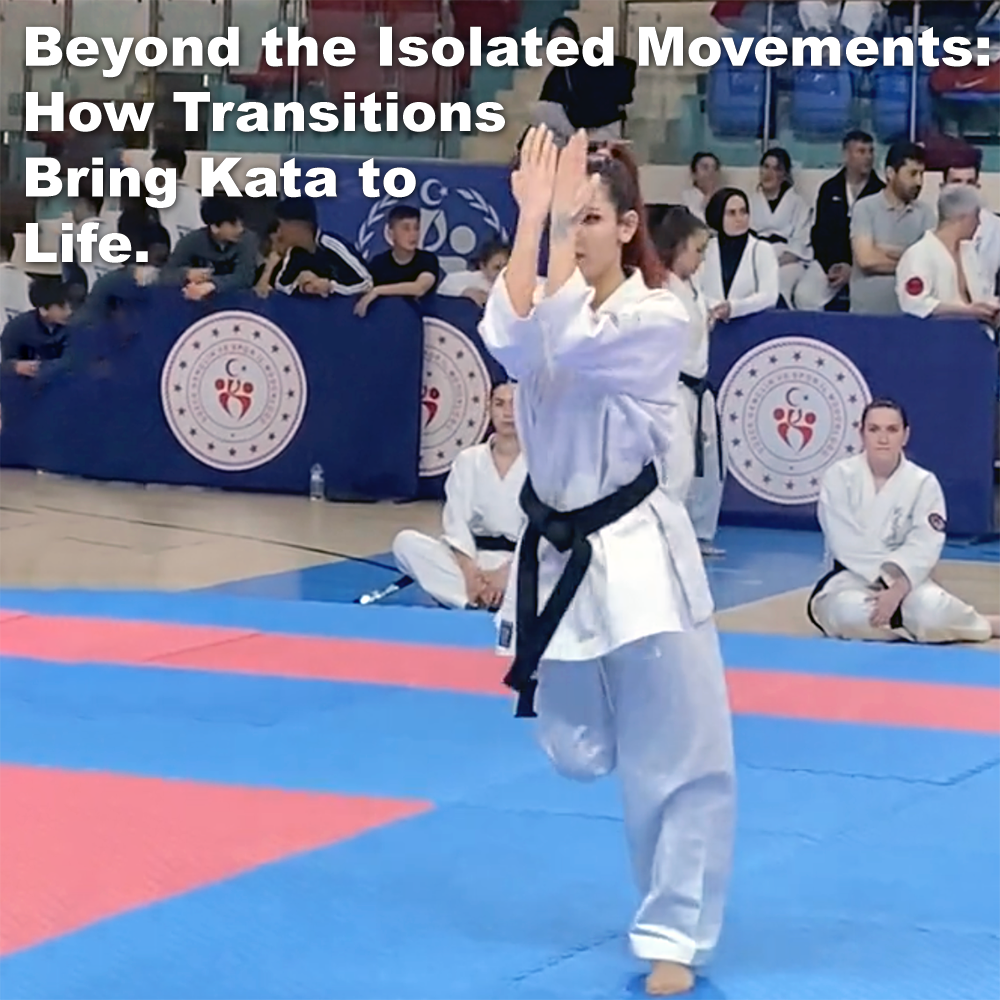
Beyond the Isolated Movements: How Transitions Bring Kata to Life.
Posted by ADAM CARTER on OCT 30, 2024

Beyond the Isolated Movements: How Transitions Bring Kata to Life.
(Approx 2 minute 10 second read)
While teaching at a Kyokushin dojo a little while ago, a Nidan there asked me about interpreting a specific move from the kata ‘Kanku’.
The Kyokushin version of the kata was not one I had practiced before, so we talked about how looking at one movement on its own can sometimes be misleading; it’s often the movements before and after that can show us more clearly what’s going on. The surrounding postures and transitions can give clues about balance, direction, and intent – details that are easy to miss if you’re only focusing on one part.
With kata like ‘Kanku’, or any other, it’s helpful to see each move as part of a flow rather than a series of separate techniques. While each movement can be practiced and applied on its own, the transitions and positioning around it often reveal how the move might work.
Watching how a technique fits into the overall pattern doesn’t mean you always have to apply it in the same sequence from the beginning of the kata to the end, but observing the flow of movements can help you understand its purpose and application.
He had asked about a movement that seemed unclear to him, and it was interesting to see how subtle changes in body position could shift its meaning.
For example, something that looks like a punch might also work as a grab, or a control technique, depending on how you enter or leave the position. This flexibility is one of the great things about kata: it isn’t a set of rigid instructions but more of a toolkit, with movements you can adapt as your understanding grows.
Thinking about kata this way opens up a lot of possibilities. By experimenting with different applications, you’ll find that it becomes more practical and versatile.
Sometimes, even a technique from one part of the kata can give insight for something earlier or later on, showing that kata isn’t always tied to a strict sequence. It’s this adaptability that allows us to keep finding new meanings in them, especially if you look past the name of the techniques.
The key thing is to get beyond the idea that motions must always be the same in application.
There are so many variables in conflict that movements always need to be adapted to fit the exact circumstances. While the movement in the solo representation will remain constant, the movement in application will need to fit the circumstances i.e. difference in the heights of the enemy, the exact angle they are at, what happened before the motion was applied, etc.
Look beyond the label of the technique and look at the how that particular part of the body actually moves. The kata stays the same, but the application changes according to the situation.
Ultimately, kata is more than a historical record; it’s a dynamic tool for learning. By looking beyond single techniques, by looking at the whole movement from beginning to end, ignoring its name for the moment, and understanding the connections between these movements, you can uncover a richer, more flexible approach that can deepen your understanding and can prepare you better for a real-world application.
Written by Adam Carter – Shuri Dojo.
